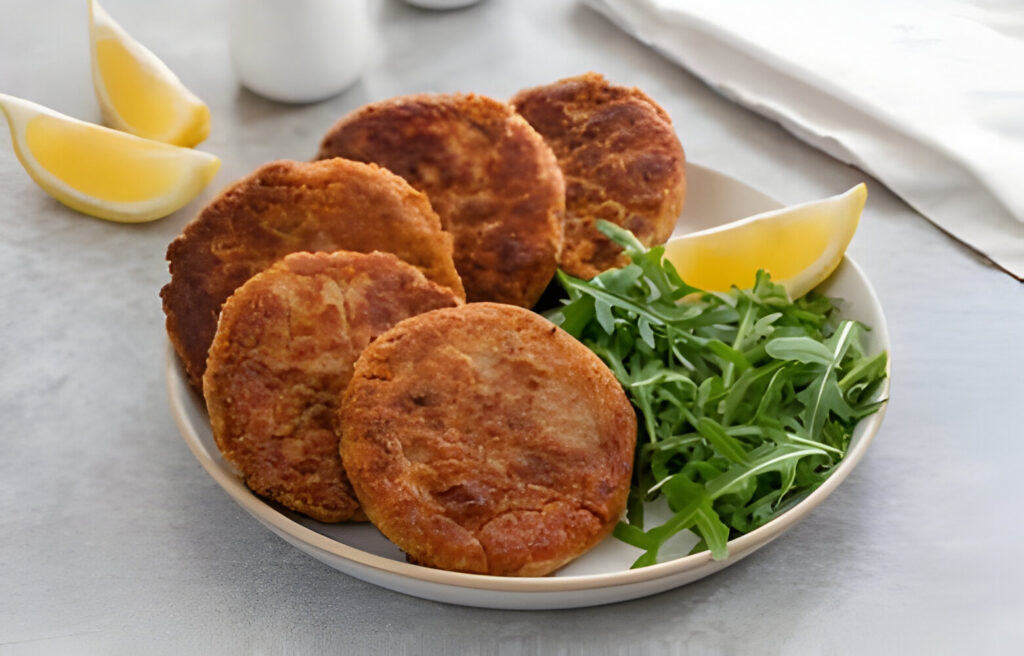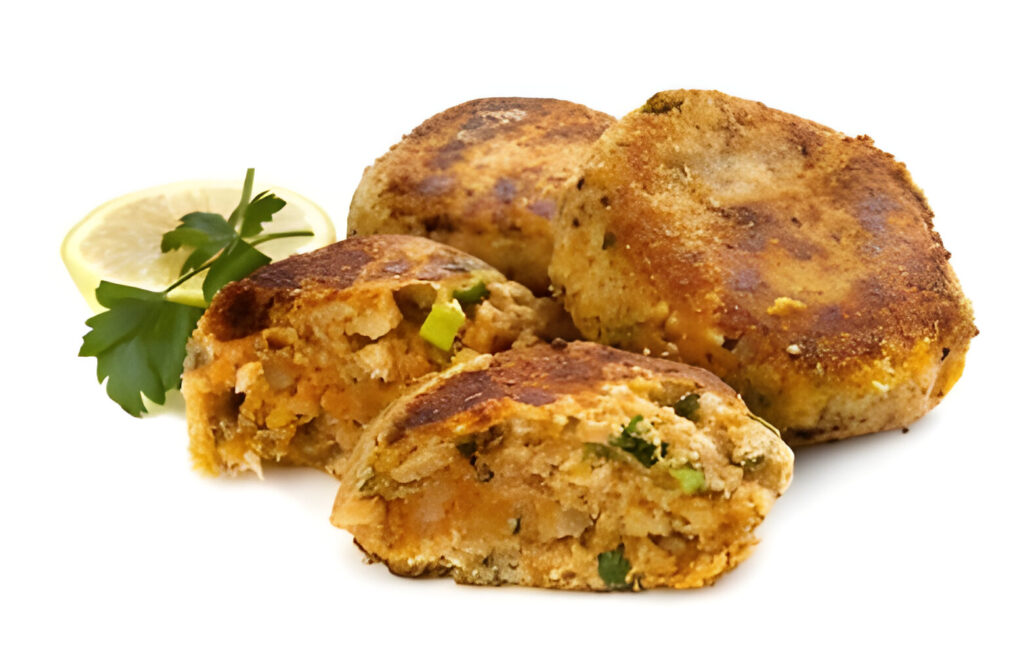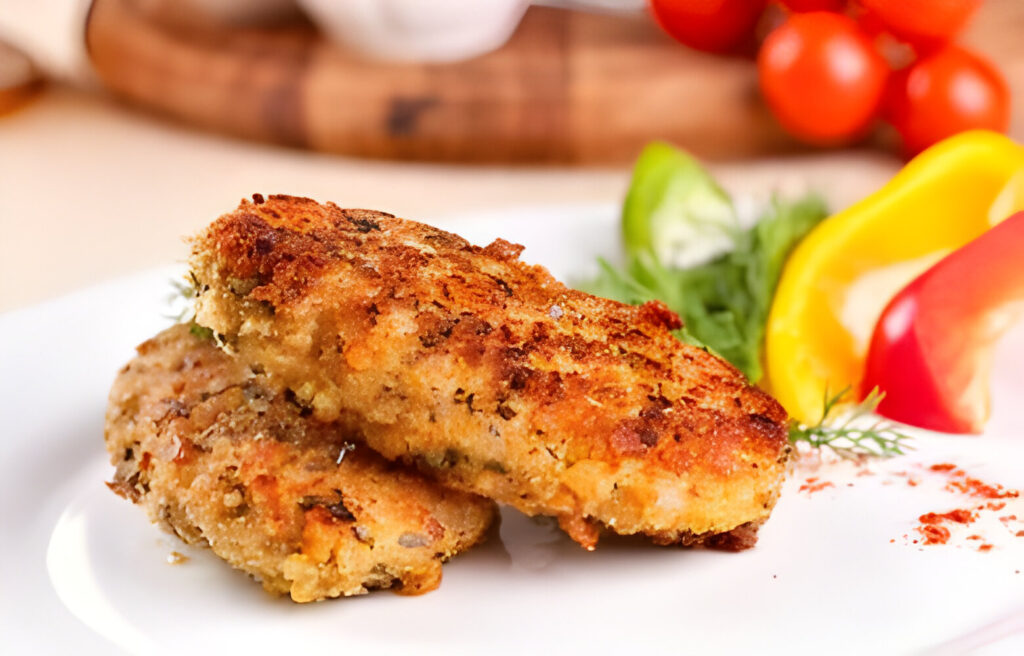The History and Cultural Significance of Fish Cakes

fishing cake stand as a testament to culinary innovation and cultural heritage across the globe. These savory delights, made from ground fish and other ingredients, have journeyed through time to become a staple in various cuisines. This section delves into the historical roots and cultural significance of fish cakes, shedding light on their global journey and prominence in different societies.
Origins of Fish Cakes
The history of fish cakes traces back centuries, originating from the need to preserve fish. Ancient civilizations discovered that minced fish, combined with extenders like flour and spices, could not only extend the shelf life of seafood but also provide a delicious meal option. This practical invention spread across oceans and continents, evolving into various forms depending on local tastes and available ingredients.
In Asia, countries like Japan and Korea have honed their unique versions of fishing cake. Japan’s kamaboko, a steamed concoction, dates back to the 14th century. Korea’s eomuk or odeng, often enjoyed on a skewer, highlights the Korean penchant for street food. Meanwhile, in Europe, the British fishcake emerged, showcasing a simple yet flavorful blend of fish and mashed potatoes, coated in breadcrumbs and fried to perfection.
Cultural Significance
Fish cakes more than just a meal; they embody cultural identity and tradition. In Japan, kamaboko is a festive food, integral to New Year celebrations, symbolizing longevity and prosperity. The artistry in its preparation and presentation speaks volumes about the Japanese commitment to aesthetics and tradition.
Korea’s eomuk tells a story of survival and creativity. Originally a product of Japanese colonization, it has been reclaimed and integrated into Korean culture as a beloved snack, particularly in colder months. It’s a testament to the adaptability and resilience of Korean culinary traditions.
In the UK, fish cakes bridge the gap between humble home cooking and gourmet fare. They reflect the British Isles’ rich maritime history and the necessity of creating hearty meals from the sea’s bounty. British fish cakes, often accompanied by mushy peas and tartar sauce, have become a comfort food staple, enjoyed in homes and pubs alike.
Global Journey
As people moved, so did their recipes and culinary practices, including fish cakes. Today, they are a global phenomenon, adapted to suit local tastes while retaining their essence. This adaptability has made fish cakes a favorite worldwide, transcending cultural and geographical boundaries.
The journey of fish cakes from a simple preservation method to a culinary delight enjoyed worldwide underscores the interconnectedness of food and culture. It highlights how a dish can evolve over centuries, adapting to new environments and tastes while maintaining its core identity. The story of fish cakes is a celebration of culinary innovation and cultural heritage, a testament to the universal language of food.
In weaving together the histories and significances of fish cakes across cultures, we not only pay homage to this versatile dish but also to the societies that have nurtured and evolved it. As we continue to explore and appreciate the diverse culinary landscapes around us, fish cakes remain a symbol of cultural unity and culinary creativity.
Nutritional Benefits of Fish Cakes
fishing cake not only delight the palate but also offer a trove of nutritional benefits. Packed with high-quality protein, omega-3 fatty acids, and various vitamins and minerals, they contribute significantly to a balanced diet. This section explores the health advantages of incorporating fish cakes into your meals, emphasizing their nutritional value and dietary importance.
High-Quality Protein Source
Fish cakes are an excellent source of high-quality protein, essential for muscle repair and growth. The protein content varies depending on the type of fish used, but generally, fish cakes provide a substantial portion of the daily protein requirement. This makes them an ideal choice for individuals looking to maintain or increase muscle mass, as well as those seeking to improve overall health.
Omega-3 Fatty Acids
One of the standout nutritional benefits of fish cakes is their omega-3 fatty acid content. Omega-3s are crucial for heart health, aiding in the reduction of cardiovascular diseases. They also play a vital role in brain function and may help in lowering the risk of depression. Including fish cakes in your diet can contribute to your omega-3 intake, supporting both heart and mental health.
Vitamins and Minerals
Fish cakes are not just about protein and omega-3s; they are also a good source of various vitamins and minerals. Depending on the type of fish and additional ingredients used, they can provide vitamin D, B12, selenium, and iodine, among others. Vitamin D is vital for bone health, while B12 supports nerve function and blood formation. Selenium and iodine are key for thyroid function, highlighting the importance of fish cakes in a nutrient-dense diet.
Fit for a Balanced Diet
Integrating fish cakes into your diet can enhance nutritional intake without significantly increasing calorie count. They can be a part of a balanced diet, contributing to overall health and well-being. Moreover, for those monitoring their dietary intake, fish cakes can be a flavorful yet healthy option, fitting seamlessly into various meal plans.
In summary, fishing cake offer more than just taste; they are a gateway to a myriad of health benefits. From providing essential proteins and fats to a range of vitamins and minerals, they are a powerhouse of nutrition. Embracing fish cakes in your diet means choosing a meal that supports muscle health, heart function, and much more, all while delighting your taste buds. As we continue to explore the versatility and benefits of fish cakes, let’s not forget their valuable contribution to a healthy, balanced diet.
Popular Fish Cake Recipes from Around the World
fishing cake, a versatile and beloved dish worldwide, showcase the unique flavors and culinary traditions of various cultures. This section introduces you to some of the most popular fish cake recipes from around the globe. Each recipe reflects its origin’s distinct taste and cooking style, inviting you to explore the rich diversity of fish cakes.
Korean Eomuk (Fish Cake)
Korean Eomuk, a staple street food, is known for its savory taste and firm texture. You’ll need white fish fillets, starch, finely chopped vegetables (carrots, onions, and scallions), and seasoning (salt, sugar, and pepper). Blend the fish fillets into a paste, mix with the other ingredients, shape into logs or cakes, and then steam or fry until golden brown. Serve with a dipping sauce made of soy sauce, vinegar, and a touch of sesame oil for an authentic Korean experience.
Japanese Kamaboko (Steamed Fish Cake)
Kamaboko, a type of steamed fish cake, is celebrated for its delicate texture and subtle flavor. Prepare it with pureed white fish, egg whites, salt, sugar, and a dash of sake for moisture and taste. Shape the mixture on a wooden board and steam until firm. Slice and enjoy kamaboko as a snack or add it to soups and noodles for a traditional Japanese flavor.
British Fish Cakes
British fish cakes offer a comforting blend of fish, mashed potatoes, and herbs, coated in breadcrumbs and fried to perfection. Combine flaked cooked fish (like cod or salmon) with mashed potatoes, add finely chopped parsley, season with salt and pepper, and form into patties. Coat with flour, dip in beaten eggs, and then cover with breadcrumbs. Fry until crispy and golden. Serve with tartar sauce and a side of mushy peas for a classic British meal.
Exploring Global Flavors
These recipes highlight the versatility of fish cakes and the unique culinary traditions of Korea, Japan, and the UK. Whether steamed, fried, or baked, fish cakes adapt to reflect the tastes and ingredients of their native cultures. By exploring these recipes, you embark on a culinary journey, discovering the universal appeal of fish cakes and their capacity to bring flavors from around the world to your table. Embrace the diversity of these dishes and let your taste buds travel the globe.

Tips for Making Perfect Fish Cakes at Home
Creating the perfect fishing cake at home can be a delightful culinary adventure, blending flavors and textures into a savory dish. This section offers expert tips and tricks to help you achieve the best results. From choosing the right fish to achieving the perfect consistency, these guidelines will ensure your fish cakes are a hit.
Selecting the Right Fish
The foundation of any great fishing cake is the fish itself. Opt for fresh or well-thawed, firm white fish like cod, haddock, or pollock for a neutral base. If you prefer a richer flavor, salmon is an excellent choice. Ensure the fish is properly cleaned and deboned before use. Freshness is key, so select the best quality fish available to you.
Achieving the Perfect Texture
The texture of your fish cake is crucial. To avoid overly dense or mushy cakes, finely chop or pulse the fish in a food processor, but don’t overdo it. The goal is a coarse paste that holds together, allowing for chunks of fish to remain for a varied texture. Mix in binding ingredients like mashed potatoes or breadcrumbs sparingly, just enough to hold the shape without diluting the fish flavor.
Seasoning for Flavor
Seasoning is where you can really make your fishing cake shine. Don’t shy away from adding herbs, spices, and seasoning to the fish mixture. Fresh herbs like parsley, dill, or chives add freshness, while spices like paprika or cayenne can introduce warmth. Salt and pepper are essential, but also consider a dash of Worcestershire sauce or lemon zest for a depth of flavor.
Cooking to Perfection
Whether frying, baking, or grilling, cooking your fishing cake to perfection is the final step. If frying, ensure the oil is hot enough so the cakes sizzle upon contact, creating a crispy exterior while keeping the inside moist and flavorful. When baking, a preheated oven and a lightly greased tray can yield a healthier yet delicious outcome. For grilling, a medium heat and a well-oiled surface prevent sticking and ensure an even cook.
Storage and Reheating
Fish cakes store well, making them perfect for meal planning. Cool them quickly after cooking, then refrigerate in an airtight container for up to three days or freeze for longer storage. Reheat in the oven or on the stove to preserve the texture and flavor, avoiding the microwave which can make them soggy.
By following these tips, you can master the art of making delicious, homemade fish cakes. Experiment with different flavors and techniques to find your perfect recipe, and enjoy the process of bringing a touch of culinary excellence to your kitchen.
Pairing and Serving Ideas for fishing cake
Fish cakes are a versatile dish that can be enjoyed in many ways, from simple snacks to elaborate meals. This section provides creative ideas for serving and pairing fish cakes, elevating them from mere comfort food to a culinary delight. Whether you’re looking for the perfect sauce, a complementary side dish, or an innovative way to present them, these suggestions will inspire you.
Innovative Sauces and Dips
The right sauce can transform fish cakes, adding moisture, flavor, and a touch of elegance. For a classic touch, tartar sauce is a go-to, offering a tangy contrast to the savory fish cakes. For something with a bit of a kick, consider a spicy mayo or a sweet chili sauce. Herb-infused yoghurt dips also work well, offering a refreshing counterpoint to the richness of the fish cakes. Experiment with dill, parsley, or cilantro for a burst of freshness.
Side Dish Selections
Pairing fish cakes with the right side dishes can create a balanced and satisfying meal. For a light option, a crisp green salad with a vinaigrette dressing complements the fish cakes’ richness. Steamed vegetables, like green beans or asparagus, add color and nutrition. For a heartier meal, consider serving fish cakes with roasted potatoes or a side of creamy mashed potatoes. These starchy sides help to absorb the flavors and round out the meal.
Creative Serving Suggestions
Presentation matters, and serving your fish cakes in a visually appealing way can enhance the dining experience. Consider placing a small fish cake atop a bed of arugula or microgreens for an elegant appetizer. For a more casual presentation, mini fish cakes make great sliders, sandwiched between mini buns with a dollop of sauce. Skewering bite-sized pieces and serving them as part of a seafood platter can also be a fun and interactive way to enjoy fish cakes at gatherings.
Incorporating these pairing and serving ideas can elevate your fish cakes from simple to spectacular. By choosing the right accompaniments and presentation style, you can create a meal that is as pleasing to the eye as it is to the palate. Experiment with different combinations to discover your favorite ways to enjoy this versatile dish.

Conclusion – The Global Appeal of fishing cake
Fish cakes, with their rich history and diverse cultural significance, have become a beloved dish worldwide. This final section encapsulates the journey we’ve taken through the world of fish cakes, highlighting their versatility, nutritional benefits, and the joy they bring to tables across the globe.
A Culinary Staple Across Cultures
We’ve explored fish cakes from various angles, from their origins and cultural significance to their nutritional value and preparation tips. It’s clear that fish cakes transcend geographical and cultural boundaries, adapting to local tastes while maintaining their essence. This adaptability is a testament to the universal appeal of fish cakes, making them a cherished dish in numerous cuisines.
Nutritional Powerhouse
The health benefits of fish cakes, rich in protein and omega-3 fatty acids, cannot be overstated. They offer a tasty way to incorporate essential nutrients into our diets, contributing to heart health, muscle maintenance, and overall well-being. Their versatility in preparation means they can be enjoyed by everyone, regardless of dietary preferences or restrictions.
Culinary Creativity and Innovation
From traditional recipes to modern twists, fish cakes are a canvas for culinary creativity. We’ve seen how they can be served in various ways, from elegant dinners to casual snacks, making them suitable for any occasion. Their simplicity allows for experimentation, encouraging cooks to explore flavors and textures.
A Dish for Everyone
Fish cakes have something to offer everyone – from the health-conscious to the gourmet enthusiast, to those simply seeking comfort food. They embody the spirit of global cuisine, bringing together flavors from around the world onto a single plate.
In conclusion, fish cakes are more than just a dish; they are a celebration of culinary diversity and innovation. As we continue to explore and appreciate the vast world of food, let’s remember the humble fish cake – a simple yet profound reminder of our shared culinary heritage. Whether you’re a seasoned chef or a home cook, the journey of fish cakes invites you to experiment, enjoy, and share the flavors they bring to the table.
FAQ: Everything You Need to Know About fishing cake
What Are Fish Cakes Made Of?
Fish cakes are versatile dishes made primarily from ground fish or fish fillets combined with binding ingredients like flour, potatoes, or breadcrumbs. Seasonings, herbs, and vegetables may also be added to enhance flavor and texture. The specific ingredients vary widely across different cultures and recipes, reflecting local tastes and culinary traditions.
How Do I Choose the Best Fish for Fish Cakes?
The best fish for fish cakes are typically firm, white fish such as cod, haddock, or pollock due to their mild flavor and sturdy texture. However, salmon, tuna, and other fish varieties are also excellent choices, offering richer flavors. Freshness is key, so opt for the freshest fish available, whether buying fresh or frozen.
Can Fish Cakes Be Made Ahead of Time?
Yes, fish cakes are ideal for meal prep and can be made ahead of time. You can prepare and shape the fish cakes, then refrigerate them for up to two days before cooking. Alternatively, cooked fish cakes can be frozen and reheated, making them a convenient and quick meal option.
Are Fish Cakes Healthy?
Fish cakes can be a healthy addition to your diet, especially when made with lean fish and minimal added fat. They are a good source of protein and, depending on the fish used, can also provide beneficial omega-3 fatty acids. To make healthier fish cakes, consider baking or grilling instead of frying and using whole-grain breadcrumbs or potatoes as binders.
How Can I Serve Fish Cakes?
Fish cakes can be served in numerous ways: as a main dish with a side of vegetables, in a sandwich or burger, or as an appetizer with dipping sauces. They pair well with a variety of sauces, including tartar sauce, spicy mayo, or sweet chili sauce, and can be accompanied by salads, steamed vegetables, or mashed potatoes for a fuller meal.